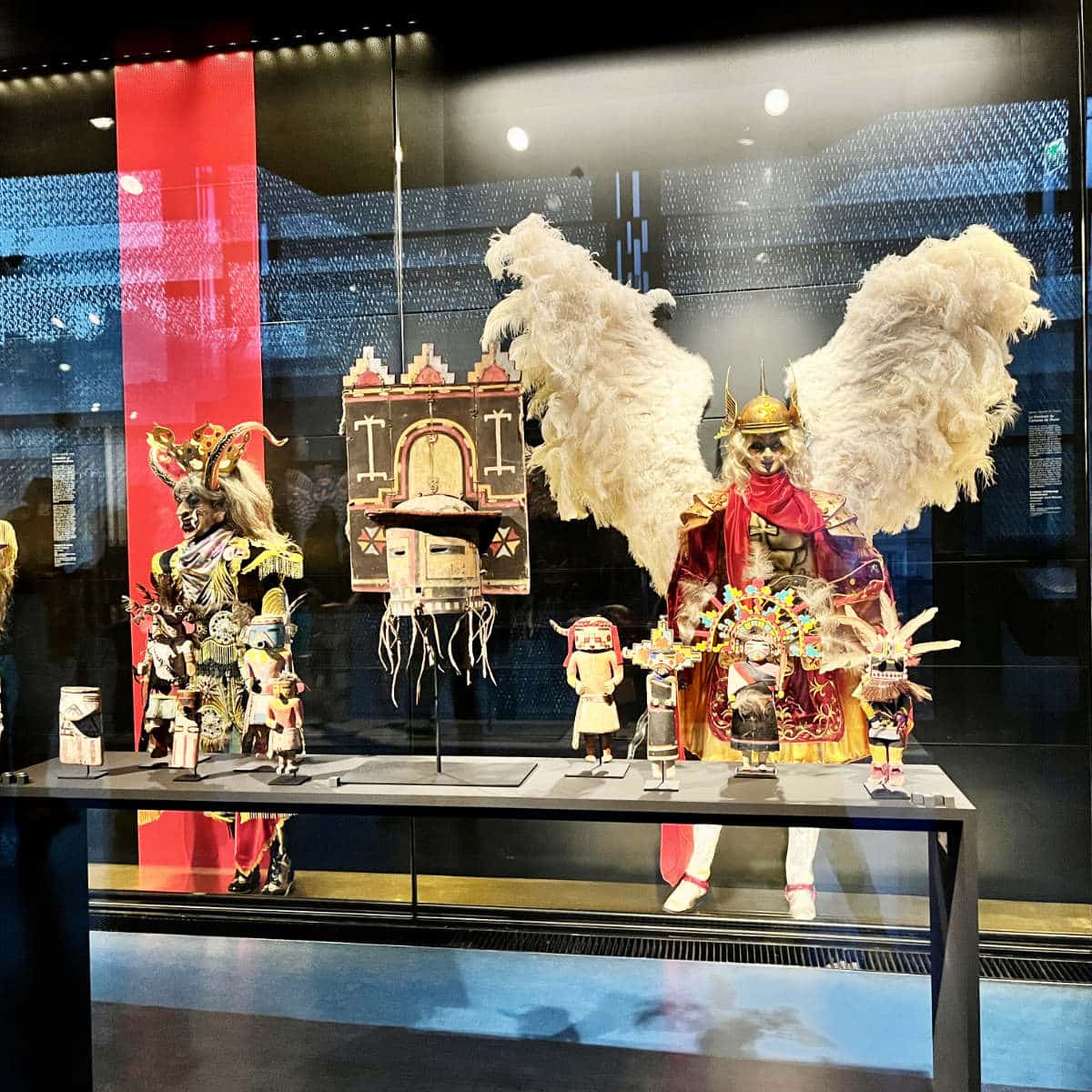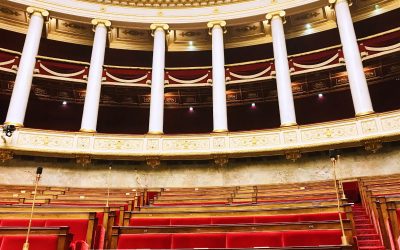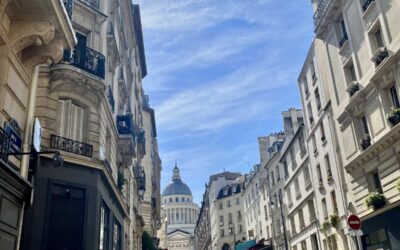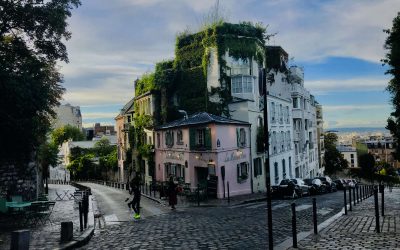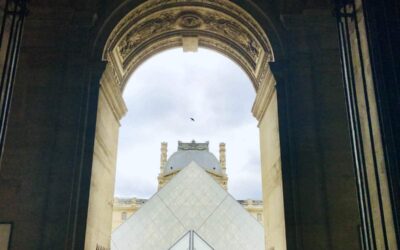If you are visiting Paris, a trip to Musée du Quai Branly may not be at the top of your list. This museum is dedicated to the indigenous arts and cultures of Africa, Asia, Oceania, and the Americas, which is perhaps not the first thing one thinks of visiting on a holiday to France.
Nonetheless, the Quai Branly museum takes visitors on a unique and fascinating voyage of art and history. From indigenous works of art to native costumes and clothing, it takes you on an expedition around the world, all without ever leaving Paris.
If you have been to all the main museums in Paris and are looking for something beyond traditional European culture, the Quai Branly museum is definitely worth a visit.
The museum is located in the 7th arrondissement within footsteps of the Eiffel tower and the Aquarium of Paris, making it easily accessible by public transportation or on foot. So let’s have a look at what there is see and do at the Musée du Quai Branly, shall we? Allons-y!
History of the Museum
The Musée du Quai Branly was opened in 2006, under the direction of then-President Jacques Chirac. It was renamed in 2016 for the French President, and is now known as “Musée du Quai Branly – Jacques-Chirac”.
It was created to showcase the unique cultural heritages from around the world and to promote cultural diversity and understanding. The museum’s name comes from its location near the Quai Branly, a quay on the left bank of the Seine River.
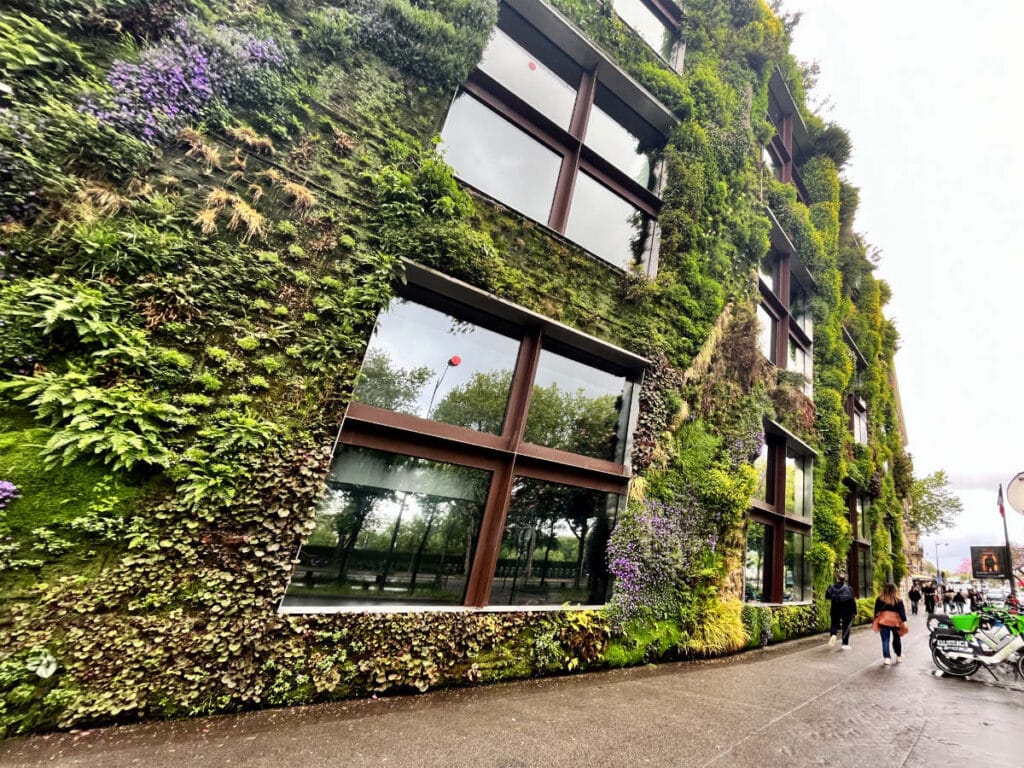
Inside the Museum
As you approach the museum, you’ll be struck by its impressive “Mur Végétale” wall of greenery, leading you into its cultured gardens. A large open-air courtyard surrounded by lush greenery leads you to the building entrance.
There are several gardens inside including small pond bassins, a roserie, and a “théâtre de verdure”.
The museum’s permanent collection is divided into four geographical areas: Oceania, Asia, Africa, and the Americas. Each section is linked by a “river” pathway which leads visitors from one to the other, starting at Oceania.
Oceania
The Oceania section of the museum features a diverse collection of art and artifacts from the archipelagos near southern Malaysia, Melanesia, Polynesia, Micronesia and Australia all the way to the to Eastern islands.
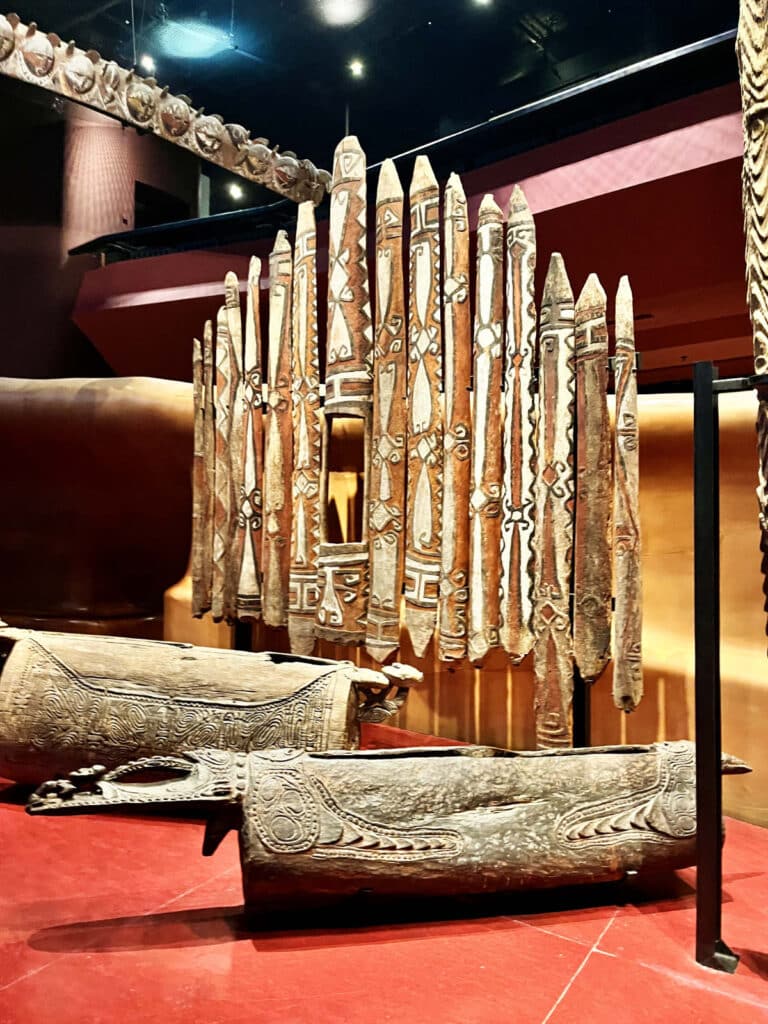
The exhibits include impressive totem poles, masks, and sculptures from various places like Papua New Guinea, the Solomon Islands, and Vanuatu. Visitors can also admire intricate cloths, jewelry, and weapons from the region.
Asia
The Asia section of the museum showcases the rich cultural heritage of Asian countries, including India, China, Japan, and stretching to the Middle East.
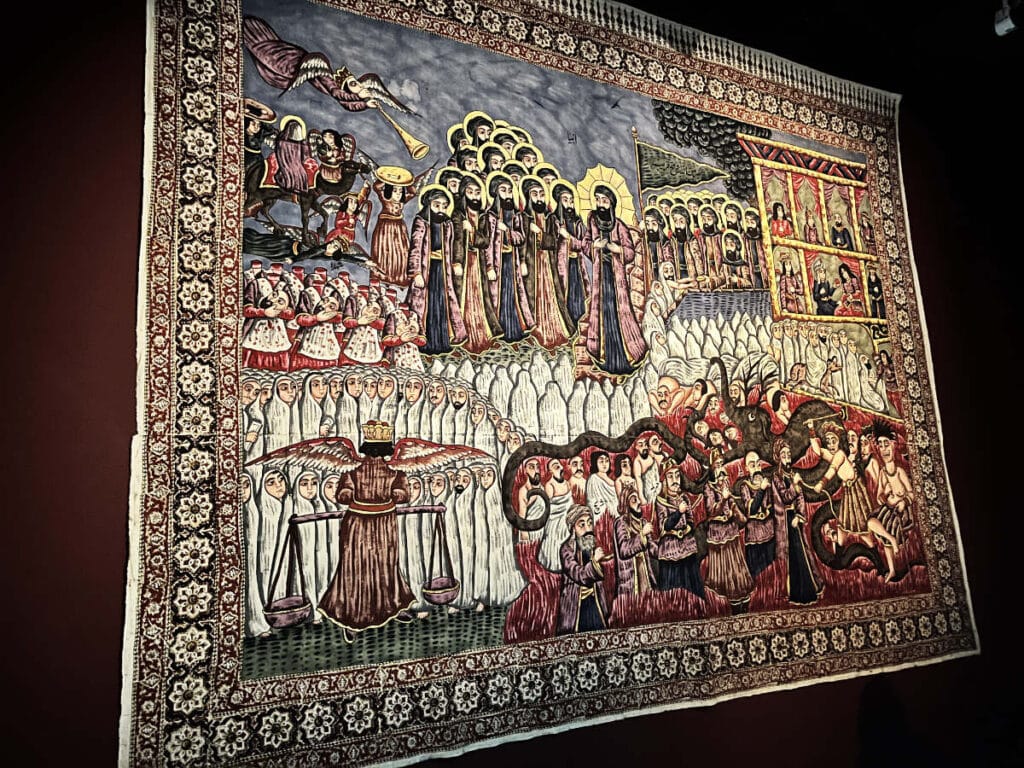
There is an extensive collection of local outfits, ceramics, textiles, and paintings, as well as Buddhist and Hindu artefacts. Particularly interesting are the exhibits of armour used by the Samurai in Japan and the shaman costume from Siberia.
Africa
Given the historical links of the French in Africa, the African section of the Quai Branly museum is quite extensive.
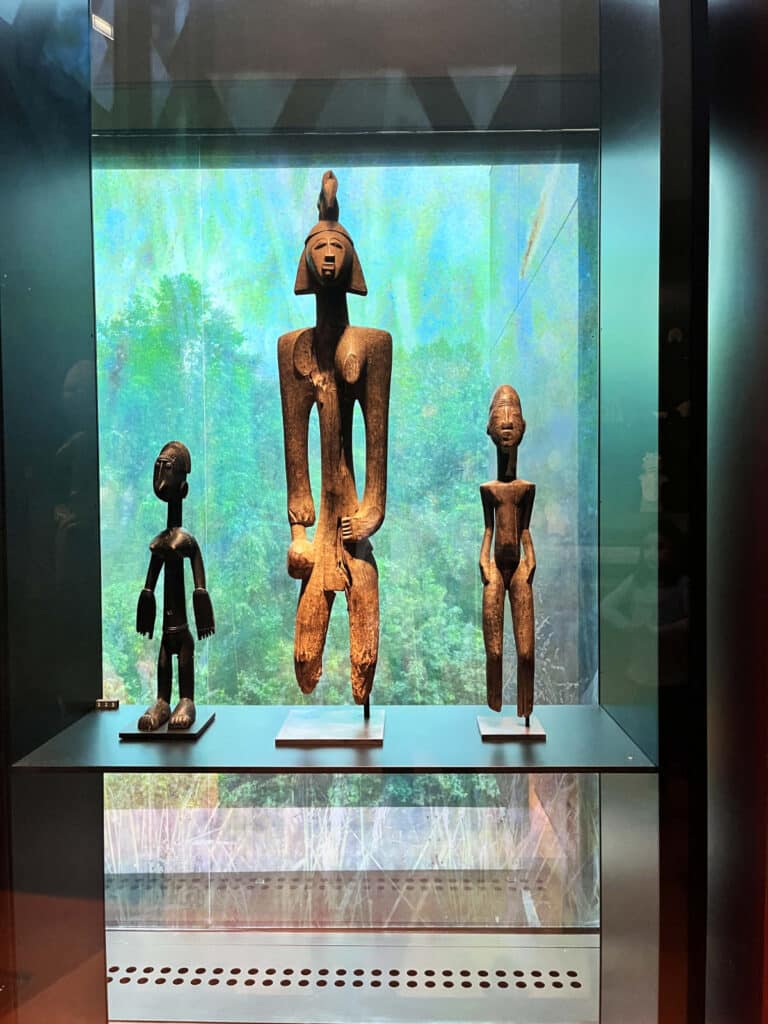
Visitors can explore impressive collections of masks, ritual artefacts, sculptures, and textiles from various regions of the continent.
The exhibits offer a fascinating insight into the diverse cultural traditions across the African continent. One item that is particularly impressive is an enormous mask made out of wood and cloth called the “Masque Ijele” from Nigeria.
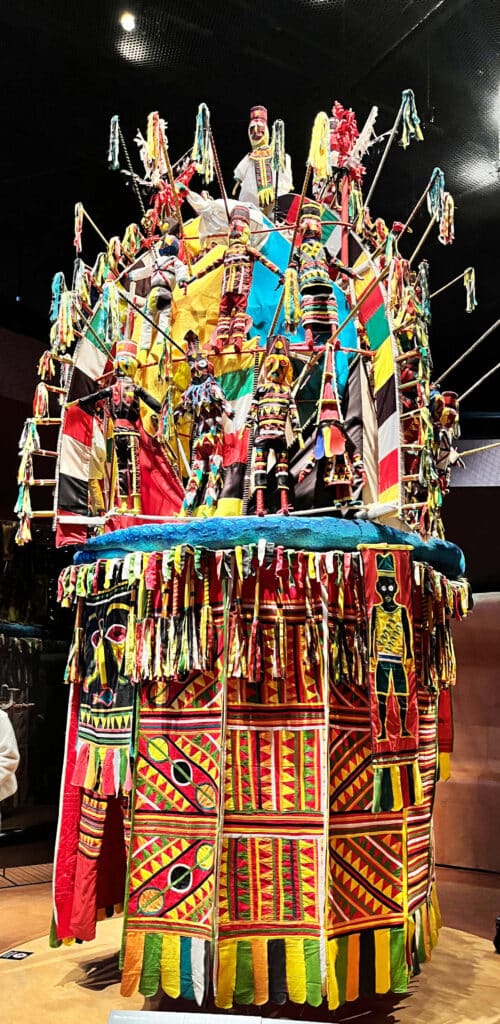
Americas
The Americas section of the museum features an extensive collection of pre-Columbian art and artifacts from the Mayan, Aztec, and Inca cultures.
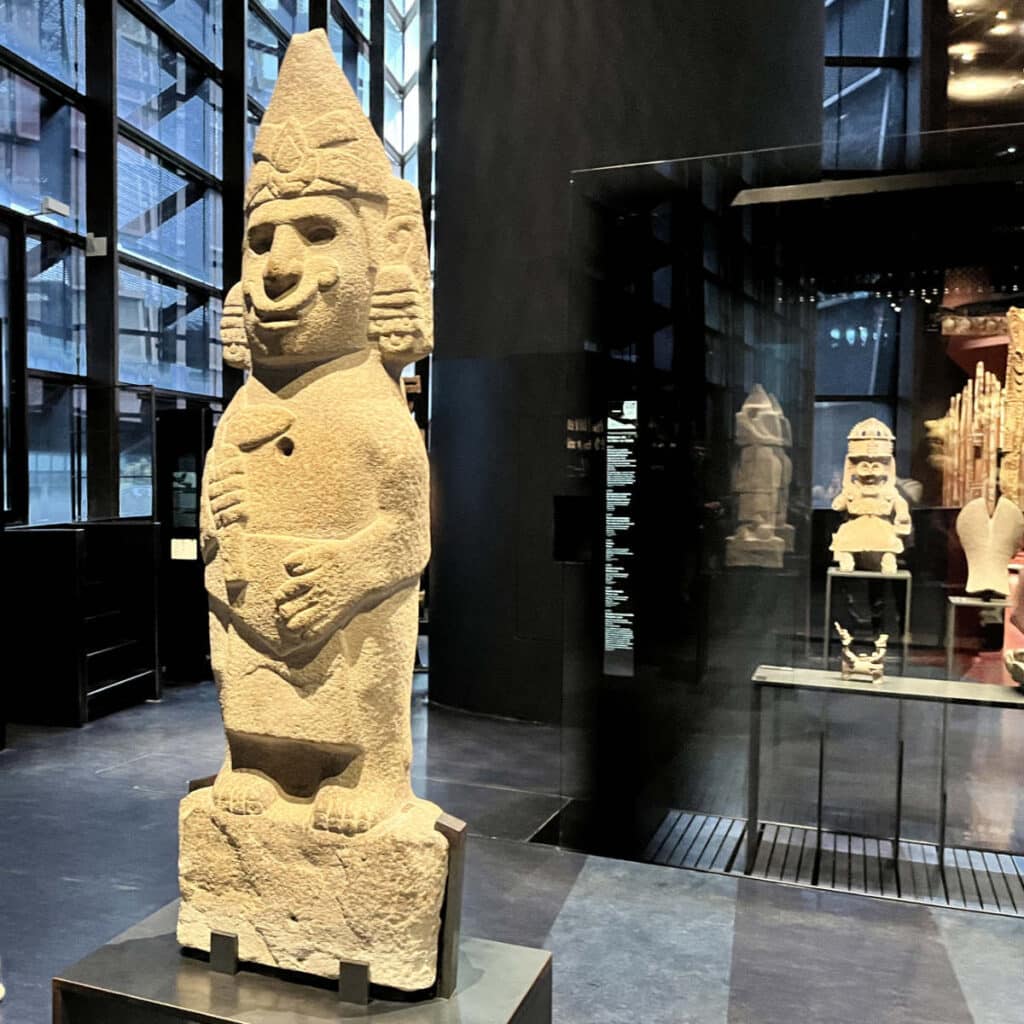
It is divided into two main parts: the first being “the Americas from the 17th century to the present day” and the second being “pre-Hispanic America” before the European conquest.
Items on display include intricate gold jewelry, stone carvings, and ceramics, as well as impressive totem poles and masks from Native American cultures.
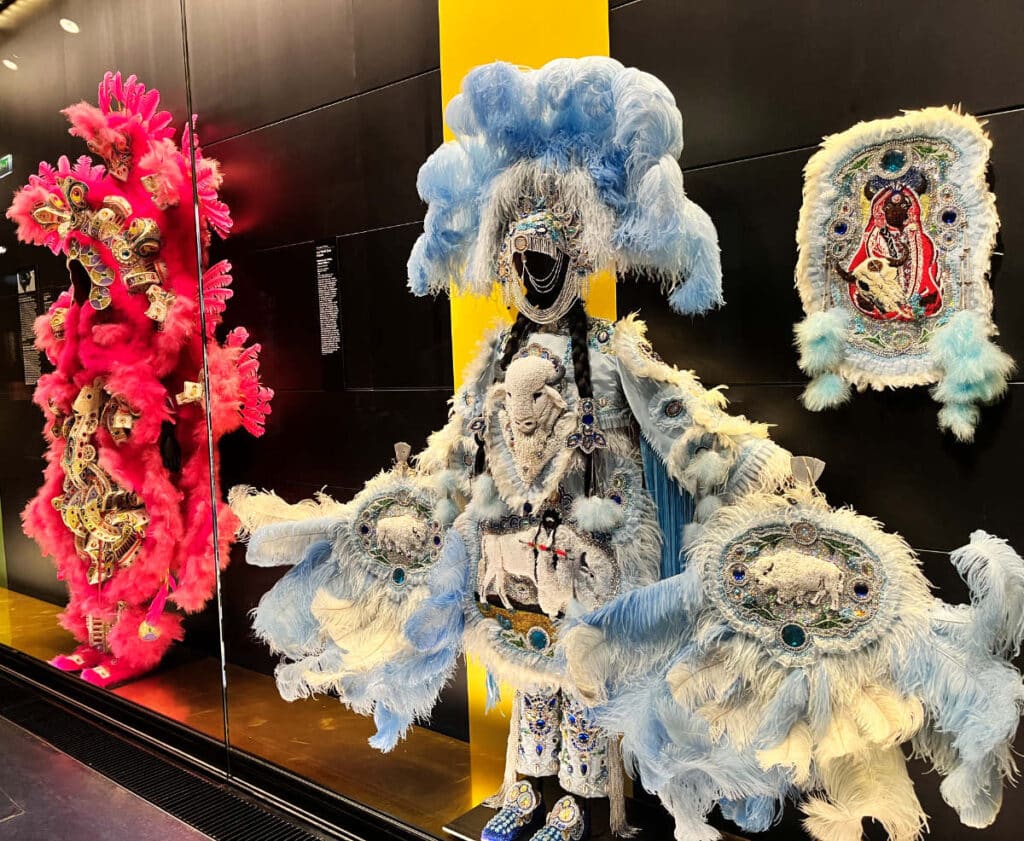
Visiting with kids and families
Throughout the museum, you’ll find interactive touchscreens and multimedia displays that provide insights into the different cultures and their traditions. There are also regularly temporary exhibits that showcase particular items like aboriginal art from Australia or traditional kimonos from Japan.
The museum is stroller-friendly however there is quite a bit of reading, which may not interest for younger children. The Musée du Quai Branly also occasionally offers educational programs and workshops for older children, although these will be in French.
There are also shows, concerts, guided tours, and hands-on activities to showcase the museum’s collections and the cultures they represent.
How to get there?
Musée du Quai Branly is located at 37 Quai Jacques Chirac, 75007 Paris. The closest station is RER train station Pont de l’Alma which is about 5 minutes away. The closest metro is La Tour-Maubourg, from where you can walk around to the entrance in about 15 minutes.
How long do you need in the museum?
It should take at least 2 hours if not half a day to visit the Quai Branly Museum. There is a lot of explore and the museum does get quite crowded during the busy summer season and on weekends. You can buy tickets for the museum here.

If you enjoyed that article, you may like to read more about the top museums in Paris. A bientôt!
